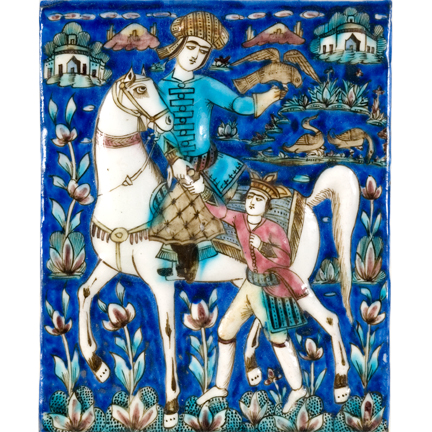
21 Oct To Rome With Love: The Vatican Ethnological Collection comes to the Bowers
Walking through Gods & Gifts: The Vatican Ethnological Collection is akin to traversing the globe while simultaneously travelling through time.
Through February 9th over 70 objects from the Vatican Ethnological Museum are on display at the Bowers Museum in Santa Ana, the largest collection to ever leave Vatican City. The exhibit spans all six inhabited continents as well as 7,000 years of human civilization, and several of the objects have never been seen outside the Vatican.
Collectively the objects in Gods & Gifts convey the incredible breadth, depth and imagination of human artistic expression, from scattered Oceanic tribes and Aborigines to sophisticated ancient Egyptian civilizations and Hinduism with its infinite complexity. The exhibit underscores that fundamental desire for human beings, once they form a society, to seek some form of spirituality, and is a tribute to the great diversity of ways human beings have developed to give meaning to our lives and sense to our world.
The most awe-inspiring piece in the exhibit is undoubtedly the 2 million year old stone hand tool from South Africa, used by our ancestors to crush bones for eating marrow, and the oldest piece in all the Vatican museums. Homo sapiens were thought to evolve 200,000 years ago which gives context to how remarkably old the artifact is.
A calendar from the Sami people, reindeer herders of northern Europe, is the sole European piece, dating to 1650 crafted from reindeer horn and covered in runic inscriptions. The exhibit also includes a small figurine from the Egyptian dynasty of Ramses II (1,300 BC), Aboriginal spear points from 5,000 BC to the 19th century and a wonderful collection of oceanic woodcarvings from the 19th century, when many of the islands were converted to Christianity.
First inaugurated in 1926, the Vatican Ethnological Museum contains approximately 100,000 objects from around the world. The first pieces in the collection were brought to the Vatican in the 1690’s and the museum continues to grow today. Father Nicola Mapelli, the Director of the Vatican Ethnological Museum, emphasizes mutual respect and “the appreciation for arts and cultures all over the world,” yet the exhibit is upfront about the past conversion efforts of the church.
The first pieces of the collection, brought by Father Romero around 1690 AD were figurines from the Tairona culture of northern Colombia (1,000-1,550AD) which were obtained via destruction of the shrines and an example of “heresy” that existed there.
Some objects underwent a conversion themselves, for example the large 19th century snail shell trumpet with bark streamers from the Marquesas. These trumpets were originally used in tribal rituals but after the conversion to Christianity many of these trumpets became a way to call worshippers to church.
Some of the most captivating pieces come from Asia: the 18th century portable temple of Vishnu from India which folds and unfolds revealing the many stories of Vishnu, a meticulously hand-pieced silk Thangka crafted for the Dalai Lama to gift to Pope Paul VI in 1973, and the incredibly rare and beautiful 13th century Japanese indigo-dyed and gold painted scrolls of the lotus sutra.
All civilizations, past, present, far and wide and as early as recorded time, have developed their own form of spirituality and much of what we designate as art and human monuments of achievement are expression of those beliefs. Gods & Gifts, represent the best and most beautiful examples. As Asian art historian Meher McArthur explains, the objects in the exhibit answer the question “if I were to give something that represents my deepest beliefs and highest artistic expression, what would I give?”
Gods & Gifts: The Vatican Ethnological Collection is on view through February 9th, 2014 at the Bowers Museum, 2002 Main Street, Santa Ana 92706. All images courtesy of Vatican Museums, Vatican City



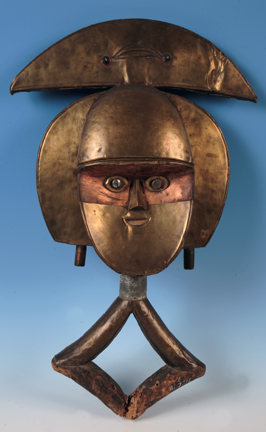

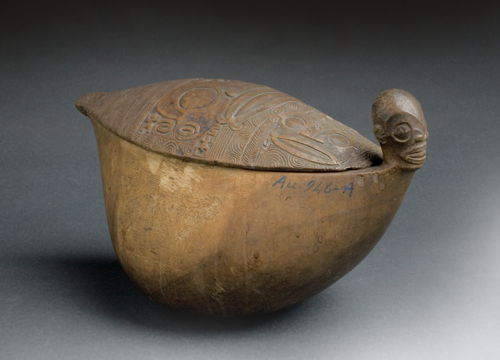
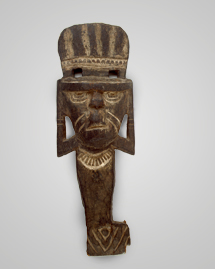
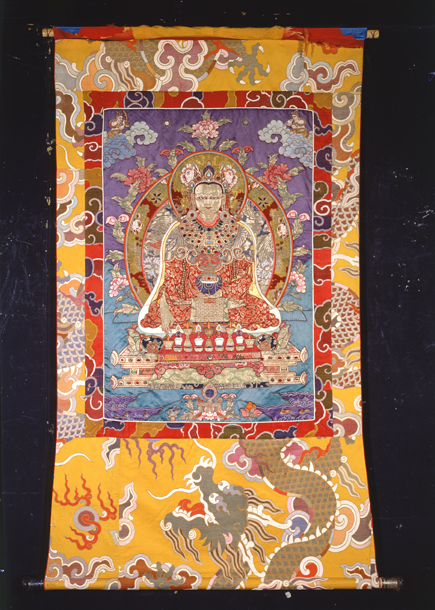

Small World Treasures
Posted at 19:03h, 22 OctoberWow, I didn’t even know the Vatican had a private art collection outside of the art that they commissioned themselves. Thank you for posting this.
Steen Madsen
Posted at 10:49h, 24 OctoberThis is a very diverse collection of artifacts from every corner of the globe. I have seen the collection at the Bowers and I found it fascinating.